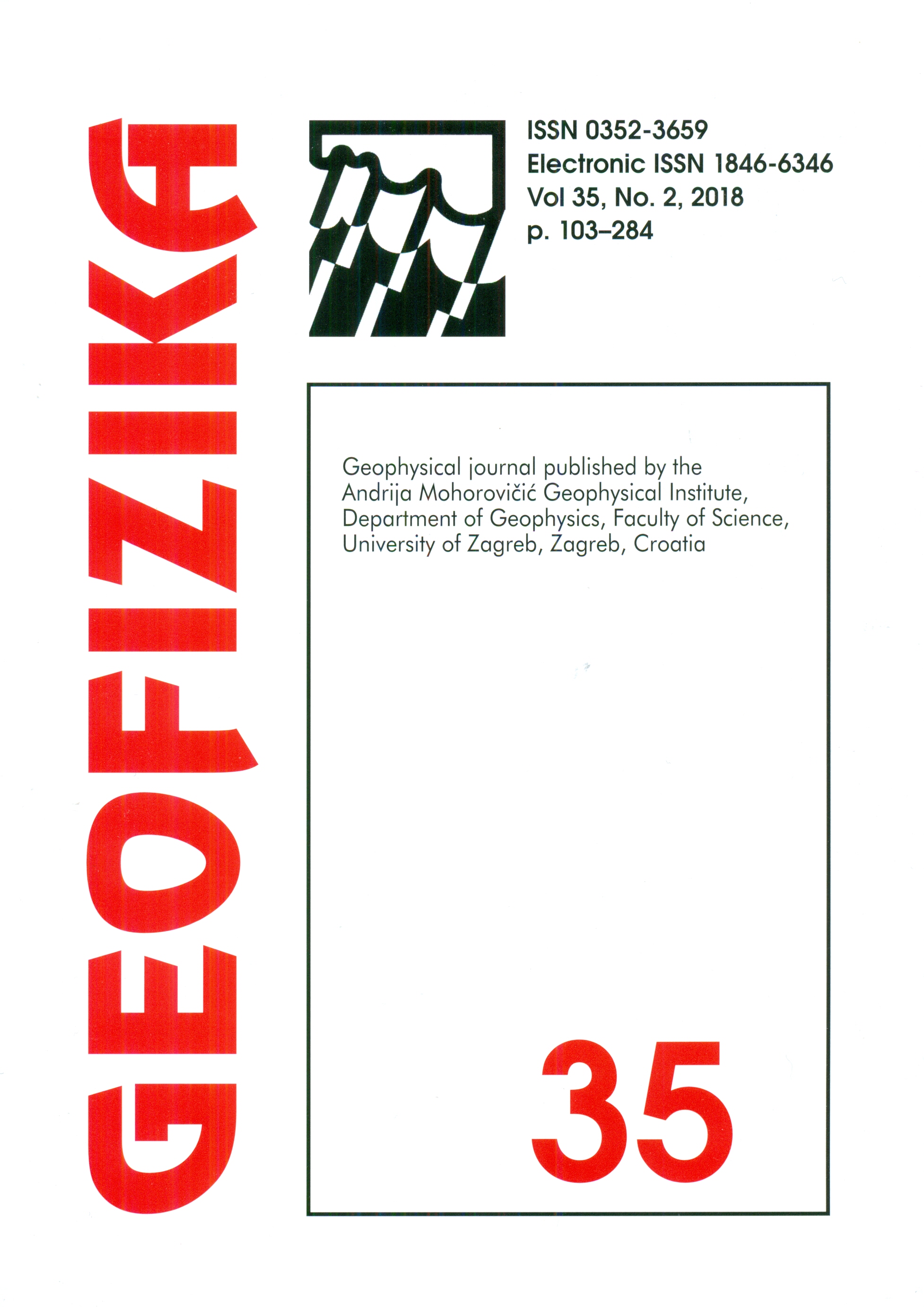Exchange of dense water between the open North Adriatic and the Croatian coastal sea: Explicitly solving a nonlinear problem
DOI:
https://doi.org/10.15233/gfz.2018.35.11Keywords:
dense water formation, advection, two-box model, North AdriaticAbstract
t has been known for a while that there are two sites of wintertime dense water formation in the North Adriatic - one in the open sea and the other in the Croatian coastal sea. Recently, it has been established that dense water is transported between the two basins, with both directions of the transport being possible. Here, a simple two-box model is developed in order to interpret the finding. The model allows for surface heat loss from the two basins and for an advective exchange of heat between the basins. Explicit solution is obtained, not only for the original, nonlinear problem but also for a simplified, linearized problem, when the initial temperature difference between the two basins vanishes. Moreover, the effect of the initial temperature difference is explored with the linearized model. The solutions point to a continuous temperature decrease in the two basins, with the temperature differences tending to limiting values. The temporal variability is controlled by the initial temperature differences, surface heat fluxes and basin dimensions and it suggests that the sum of surface heat loss and advective heat gain in one basin tends to become equal to the sum of surface and advective heat losses in the other basin. The solutions also indicate that the sign of the temperature difference between the two basins could be positive or negative, implying that the cold, dense water could be transported either way. Finally, an index, incorporating the initial temperatures, the surface heat fluxes and the basin depths, is proposed with the aim of quantifying relative importance of the two North Adriatic sites of dense water formation for each particular winter.
Downloads
Published
Issue
Section
License
Copyright (c) 2021 Geofizika journal

This work is licensed under a Creative Commons Attribution-NonCommercial 4.0 International License.

